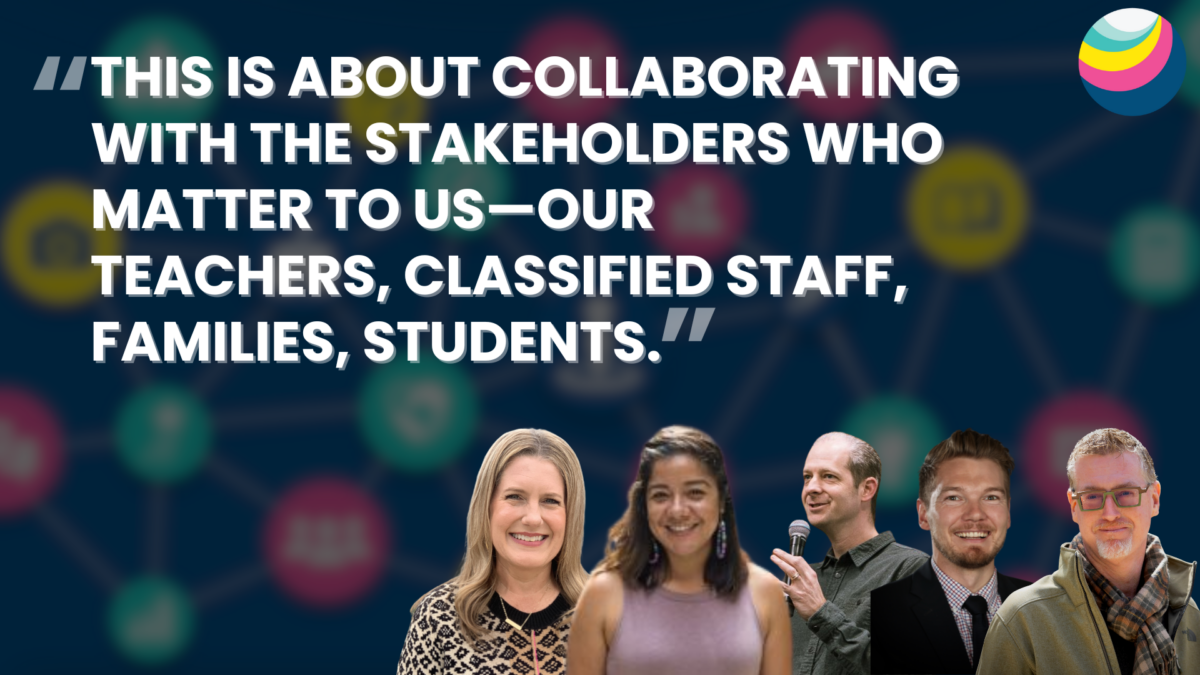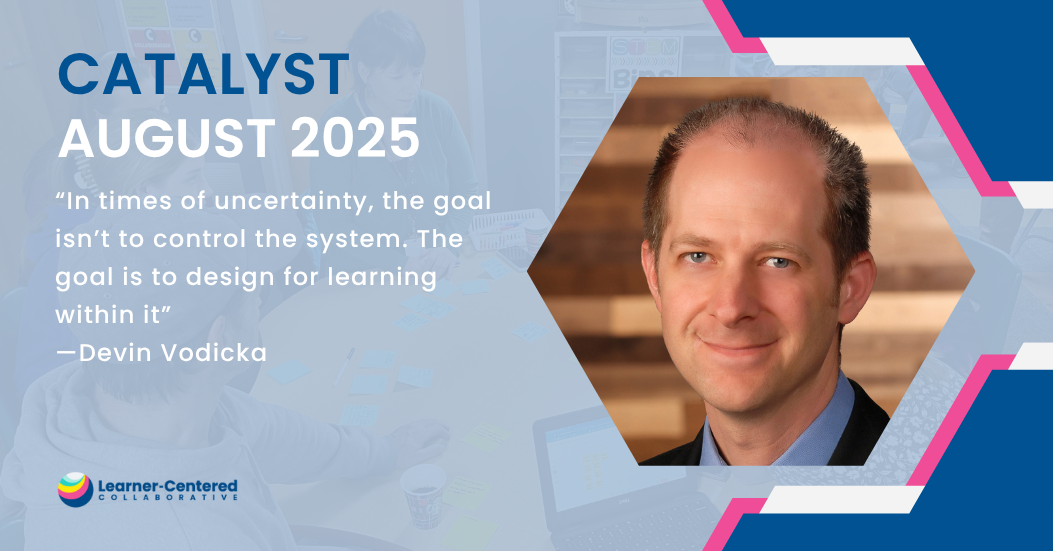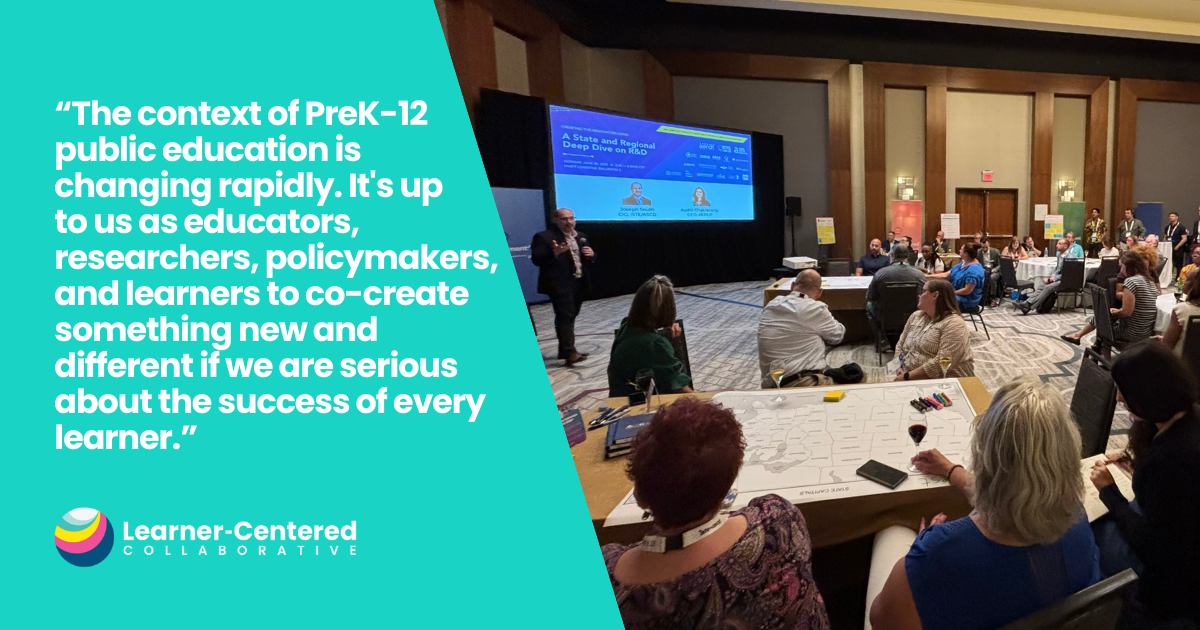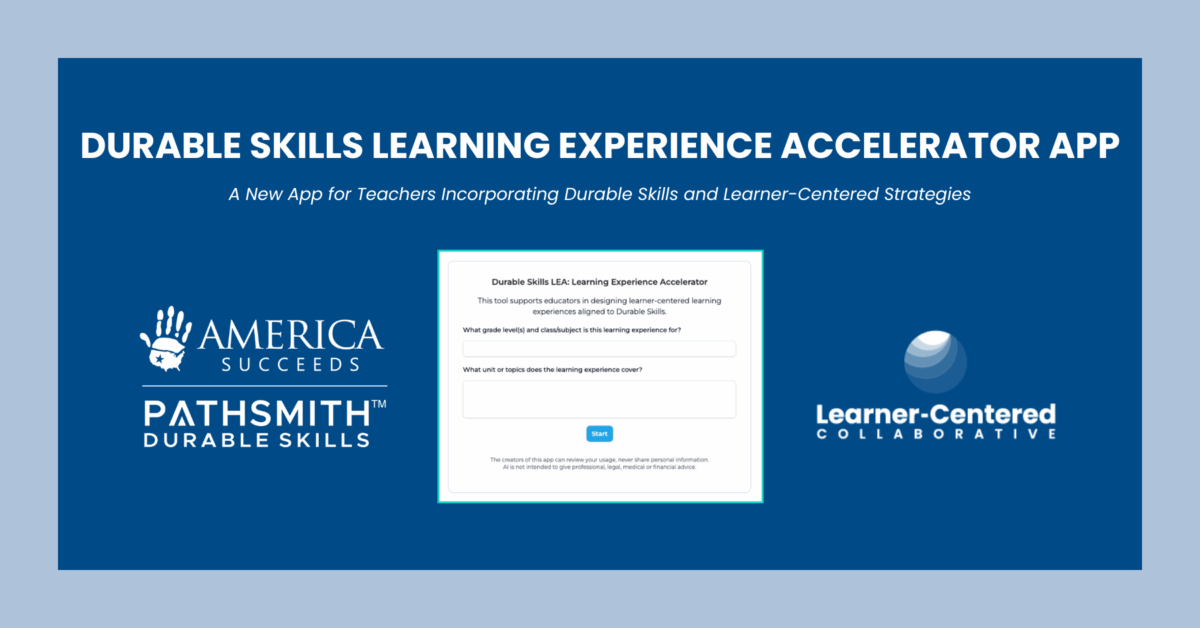Redefine Educator Roles & Responsibilities
Overview
With a shift to learner-centered learning and in the age of AI, the role of the educator is also shifting. A learner-centered vision for the future where all learners (both young learners and adults) are developing the whole learner outcomes defined in a school or district Portrait of a Learner, what defines effective teaching and learning also shifts. This means that job descriptions as well as growth and evaluation tools of all educators in the system, from classroom educators to leaders must reflect the competencies that each person needs to successfully support learners and reach the shared vision. It means evolving roles beyond traditional boundaries where educators are also leaders and work in teams instead of silos. This form of distributed leadership is a key element of a learner-centered school design precisely because in order to make more learner-centered environments we must not only develop learner agency with students, but also empower educators to exercise agency. Team teaching models that highlight collaborative structures and emphasize quality over efficiency are also key to support learner-centered systems.
Well-defined educator job descriptions and competencies, making clear each person’s roles and responsibilities, that center on the school or district’s learner-centered vision are integral to creating clarity and coherence to support a system to move closer to their vision for the future. With clear roles, responsibilities and competencies, systems can focus on more aligned recruitment, onboarding, competency-based professional learning professional learning, and growth and evaluation plans.
Bright Spots
Clear Educator Competencies
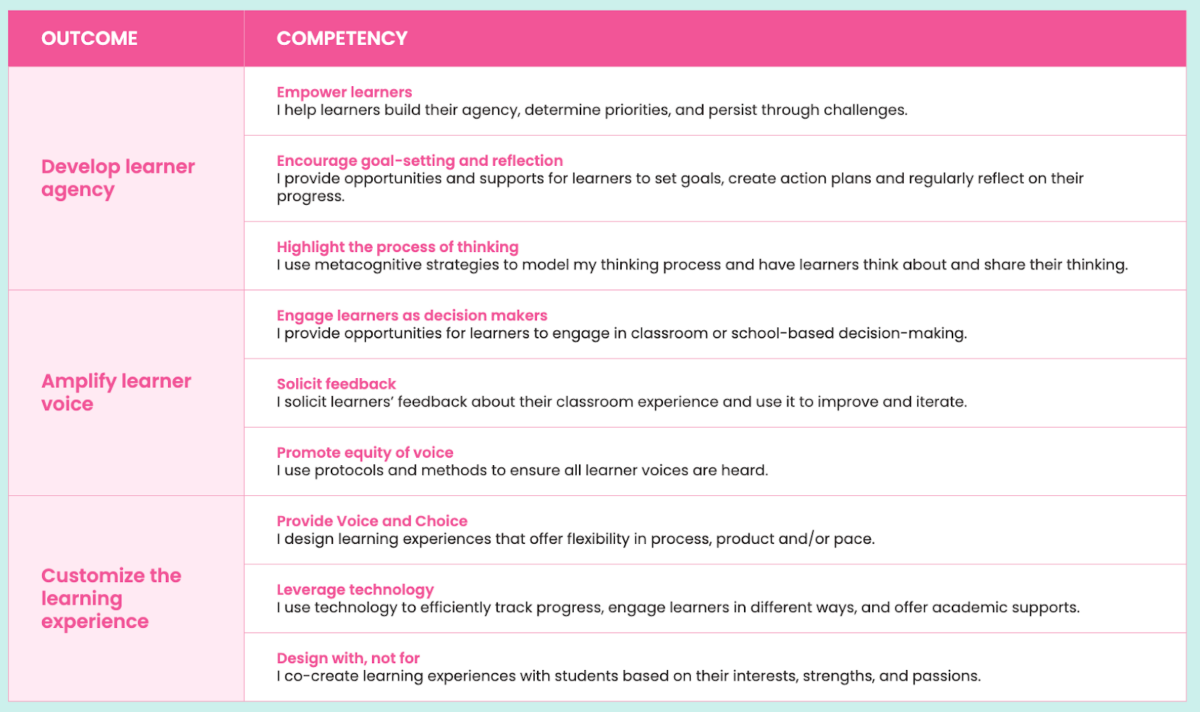
At Learner-Centered Collaborative we have clearly-defined educator competencies that define instructional practices for educators to implement authentic, competency-based, personalized, equitable and inclusive learning experiences based on learning sciences research. These competencies have been adapted and adopted by dozens of schools and districts across the country as part of their Framework for the Future process. These competencies form the basis for strategies educators can implement, courses they can take to learn more and micro-credentials for submitting evidence of these competencies in practice.
Create team teaching roles
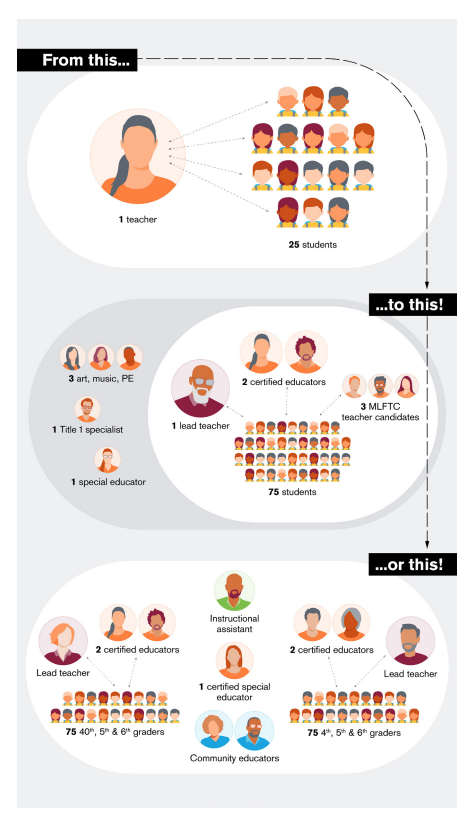
Source: Next EducationWorkforce ASU
Arizona State University’s Mary Lou Fulton Teachers College (MLFTC) works with schools and districts to rethink the role of the educator from being all things to many students to having specialized roles through team-teaching structures to support cohorts of students. They have also clearly defined the role of a “lead teacher” in a team-based structure.
Teacher-Led Committees
At High Tech Elementary, Principal Allie Wong, established several different teacher-led committees that played an active role in school decision-making. This process ensures teacher buy-in and ownership, making implementation of new ideas smoother and more effective. Examples of Committees:
- Events Committee: Planned school wide events to honor holidays, heritage months and family engagement initiatives
- Professional Learning Committee: Designed staff meetings and professional development based on teacher input
- School Schedule Committee: Evaluated and improved the school schedule
- Curriculum Committee: Collaborated on curriculum decisions
RESOURCES:
Inspired to explore more? Check out the research and guides below to consider how you might create a competency-based professional learning system.
📖 Envisioning Educator Roles for Transformation
📖 Hey teacher, what should we call you?
📖 Sharing the Load: a report from Denver public schools about teacher leaders
📖 How might learner-centered systems promote relationships and teamwork?
Questions to Consider:
- What jobs do you need done in your system to bring a learner-centered vision to life? If you are taking on new initiatives such as community-connected partnerships or system-wide project-based learning, are there roles that different people could fill to focus on those areas?
- How can you rethink how you cohort learners to create more support for educators to play different roles and work more collaboratively?
- What do you want educators in your system to do? What would good teaching and learning look like? What would being a successful educator in your system look like?
